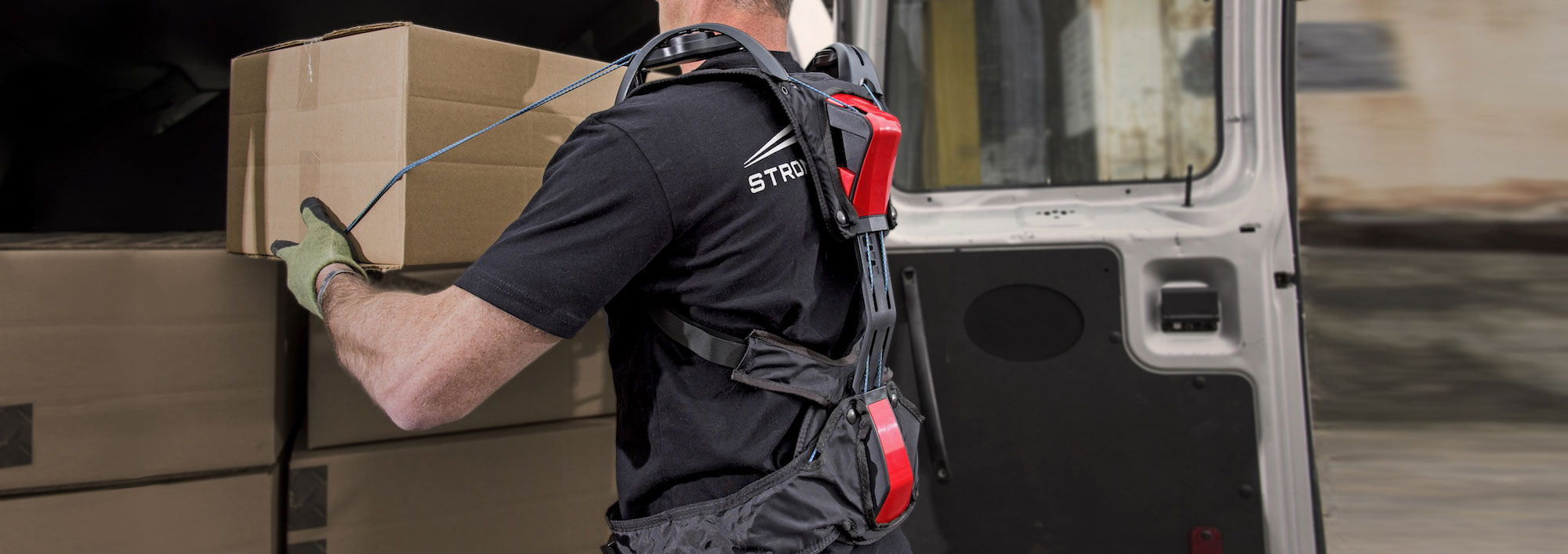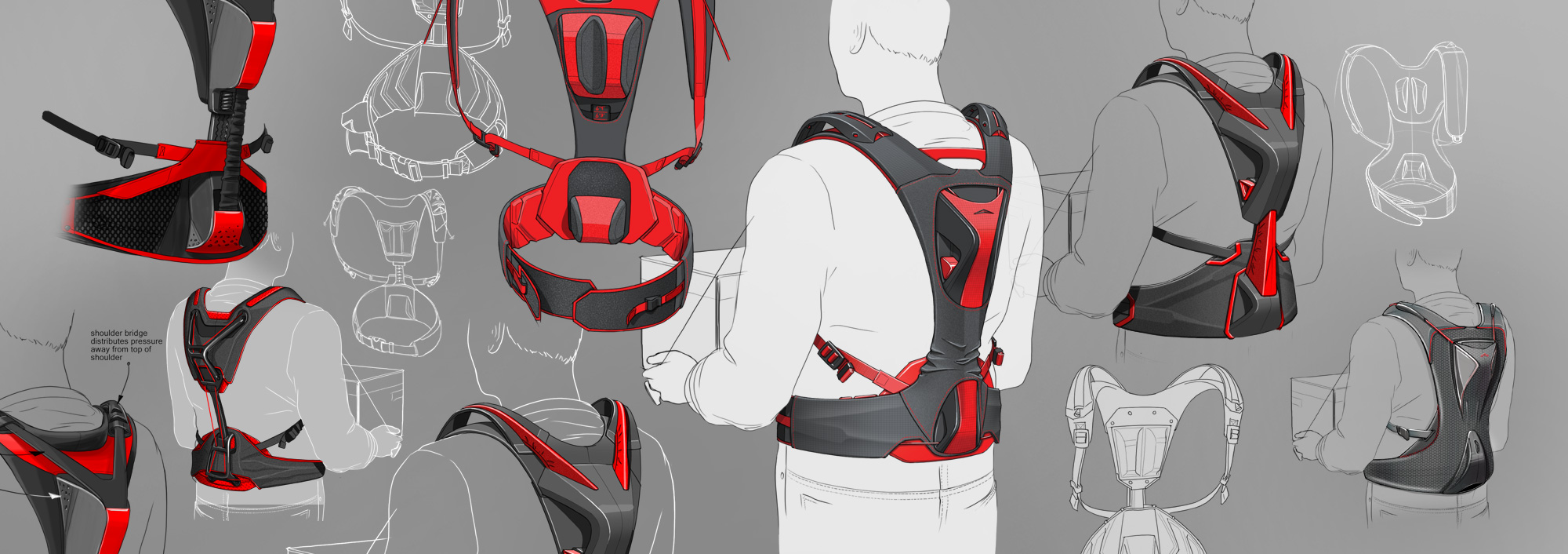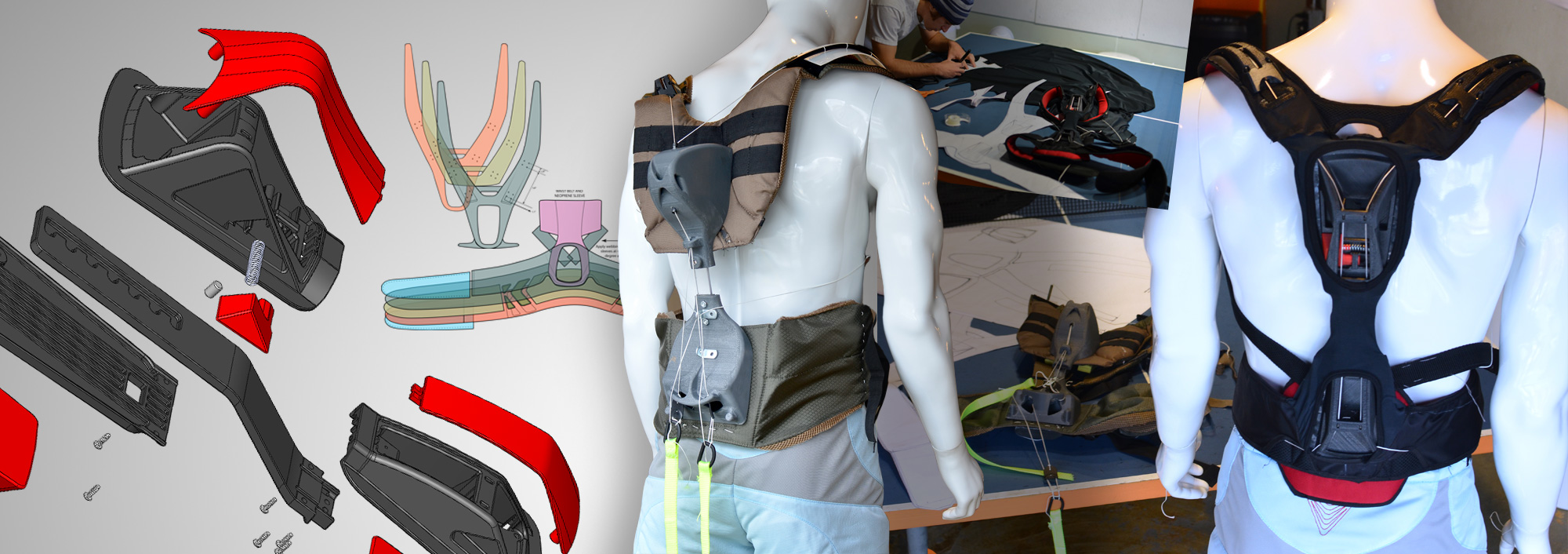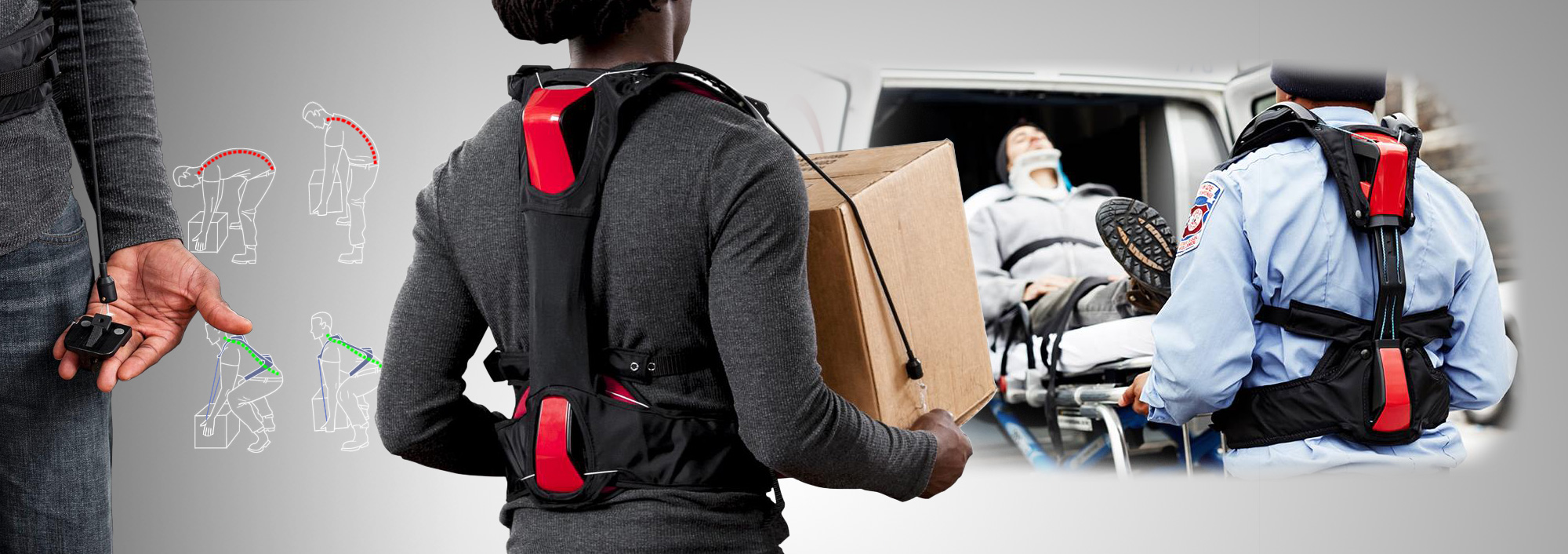
V22
Ergoskeleton
Industrial Design I Engineering I Prototyping
Many of today’s manufacturing jobs require the workforce to perform some level of physical labor, and the repetitive nature of this labor can take a serious physical toll on a worker over the course of his or her career. Two students from RIT, whose fathers both endured enormous physical strain at their blue-collar jobs, set out to create a device that would assist physical laborers by helping them maintain proper posture while performing their tasks.
This is how StrongArm Technologies was created, and the solution that co-founders Sean Petterson and Justin Hillery invented is worn by the worker like a backpack. Cords run from hand effectors over the shoulders, through an exoskeletal spine, criss-cross the lower back, and wrap around the waist. When a heavy object is lifted, clutch mechanisms in the hand effectors engage, transferring some of the load from the arms to the shoulders through the cables and forcing the worker’s back into the proper lifting posture.
When they contracted Tool, StrongArm had a crude, albeit functional, prototype. They asked Tool to develop some key aspects of the product, including cable management, easy size adjustment (soft goods, exoskeletal hard goods, and cord lengths), user-friendly donning and doffing, and of course, it had to look cool.
After working through two rounds of design, the designers and engineers at Tool moved into physical prototyping. Several prototypes were made, each with a combination of 3D printed hard good components, hand cut and sewn soft goods, and even cast foam padding. Each prototype outperformed the previous one, and the end result was the V22 ErgoSkeleton.






